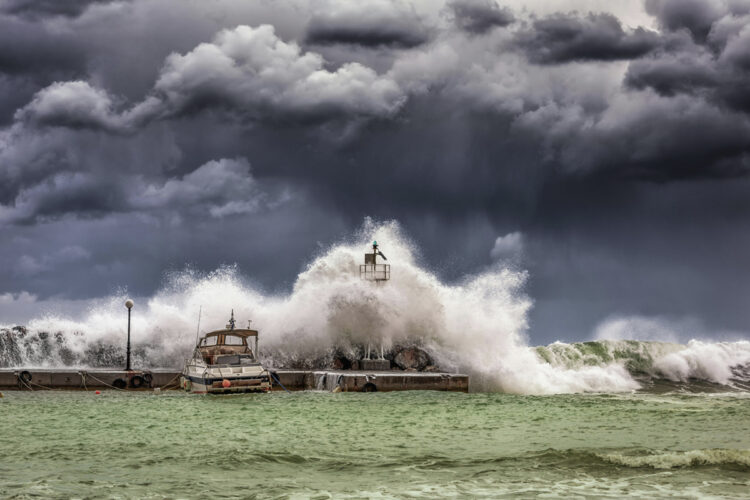
Dear EarthTalk: What’s the connection between climate change and an increase in so-called atmospheric rivers?
—John H., Bridgeport, CT
Feb. 7. Atmospheric rivers are narrow bands of water vapor that form in the mid to high latitudes. These can span several miles and carry immense amounts of water—up to 27 times the flow of the Mississippi River. They primarily transport water from tropical oceans toward the poles, causing heavy precipitation during landfall. Their formation begins with evaporation over warm oceans, and then moves to cooler latitudes, with the moisture then falling as rain or snow when it reaches coastal regions.
A common example of this is the Pineapple Express, which carries tropical moisture from Hawaii to the West Coast.
Good vs. bad
These have both positive and negative effects. They are necessary and they contribute to 50 percent of California’s annual precipitation which prevents severe droughts and replenishes water supplies. On the down side, they can be destructive through flooding, landslides and ice shelf melting. In January 2023, California experienced a series of atmospheric rivers that caused widespread flooding, power outages and landslides, causing over 20 deaths and billions of dollars in damages.
California and other parts of the West Coast have since experienced additional storms, highlighting their recurring impact on the region.
Climate change
Climate change has amplified the intensity and frequency of atmospheric rivers, because warmer air holds more moisture. Daniel Swain, a climate scientist at University of California, Los Angeles, estimates that due to the effect of climate change, atmospheric rivers currently carry 5-15 percent more precipitation now than they would have before.
Research led by scientists have also estimated that by 2100, the Pacific Northwest could experience such severe atmospheric rivers that would temporarily raise ocean levels up to three times higher, creating a significant flooding risk.
Regions up and down the West Coast will be at the forefront of these impacts, with California especially vulnerable to intense swings between drought and heavy precipitation. The Pacific Northwest can expect to face severe flooding and coastal impacts as well.
What you can do
Individuals can be part of the solution. Reducing greenhouse gas emissions is essential, from adopting personal sustainability practices to supporting policies that address climate change, you can help mitigate the frequency of atmospheric rivers. Advocating for investments in flood infrastructure, water management systems, and forecasting technologies is also critical to improve resilience to disasters. Furthermore, educating others about the potential risks and factors can increase awareness.
CONTACTS: Lamont-Doherty Earth Observatory, “Climate Expert Explains Why Atmospheric Rivers Are Causing Historic Rainfall in California,” lamont.columbia.edu/news/climate-expert-explains-why-atmospheric-rivers-are-causing-historic-rainfall-california; National Oceanic and Atmospheric Administration (NOAA), “What Are Atmospheric Rivers?” noaa.gov/stories/what-are-atmospheric-rivers.
EarthTalk® is produced by Roddy Scheer & Doug Moss for the 501(c)3 nonprofit EarthTalk. See more at https://emagazine.com. To donate, visit https://earthtalk.org. Send questions to: question@earthtalk.org.





